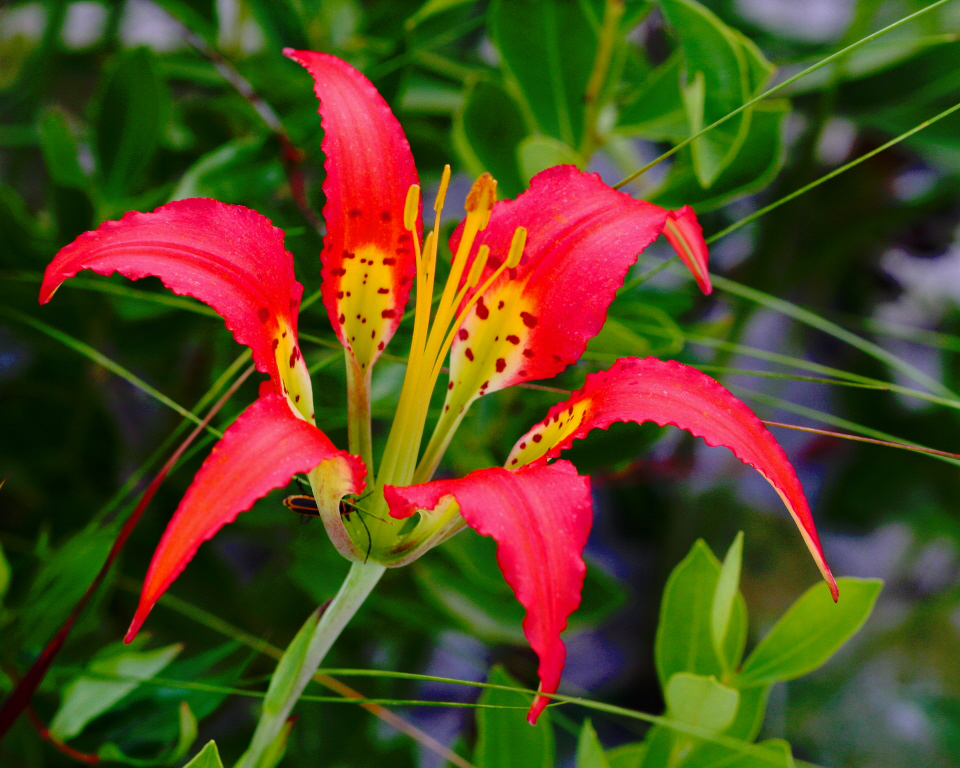Catesby’s lily
Pictured above: Catesby’s lily (Lilium catesbaei) by Mary Keim. Click on terms for botanical definitions. View post as a PDF.
Also known as Pine lily, Leopard lily, Tiger lily or Southern-red lily, Catesby’s lily (Lilium catesbaei) is a long-lived perennial wildflower. Its large, showy flowers have six conspicuous tepals that are bright reddish-orange and reflexed. At their inner base, the tepals are yellow with purple spots. Stamen are also conspicuous, with tall yellow filaments extending above the tepals and topped by orange or yellow anthers. Flowers are singular and terminal, born atop an erect stem that emerges from a basal rosette of linear leaves. Stem leaves are small and few if not absent. The fruit is an inconspicuous capsule that splits when ripe, releasing many small, papery seeds, which the wind carries away.
Catesby’s lily occurs in mesic to wet flatwoods, wet prairies and savannas. It is very sensitive to growing conditions, and thrives in conditions generally inhospitable to other lilies. It responds well to fire. Catesby’s lily typically blooms summer to late fall, attracting a variety of pollinators, but primarily pollinated by swallowtail butterflies.
Catesby’s lily bears the largest flower of any North American lily. In Florida, it is a state-listed threatened species.
Family: Liliaceae (Lily family)
Native range: Throughout much of Florida
To see where natural populations of Catesby’s lily have been vouchered, visit florida.plantatlas.usf.edu.
Hardiness: Zones 8A–10B
Soil: Moist to wet, well-drained acidic sandy soils
Exposure: Full sun to minimal shade
Growth habit: 2–3’+ tall
Propagation: Seed, division
Garden tips: Catesby’s lily is rarely available commercially. If you are lucky enough to have it on your property, you may be able to collect seeds or divide bulblets; however, this plant is not easy to propagate. It is not salt-, drought- or flood-tolerant.

